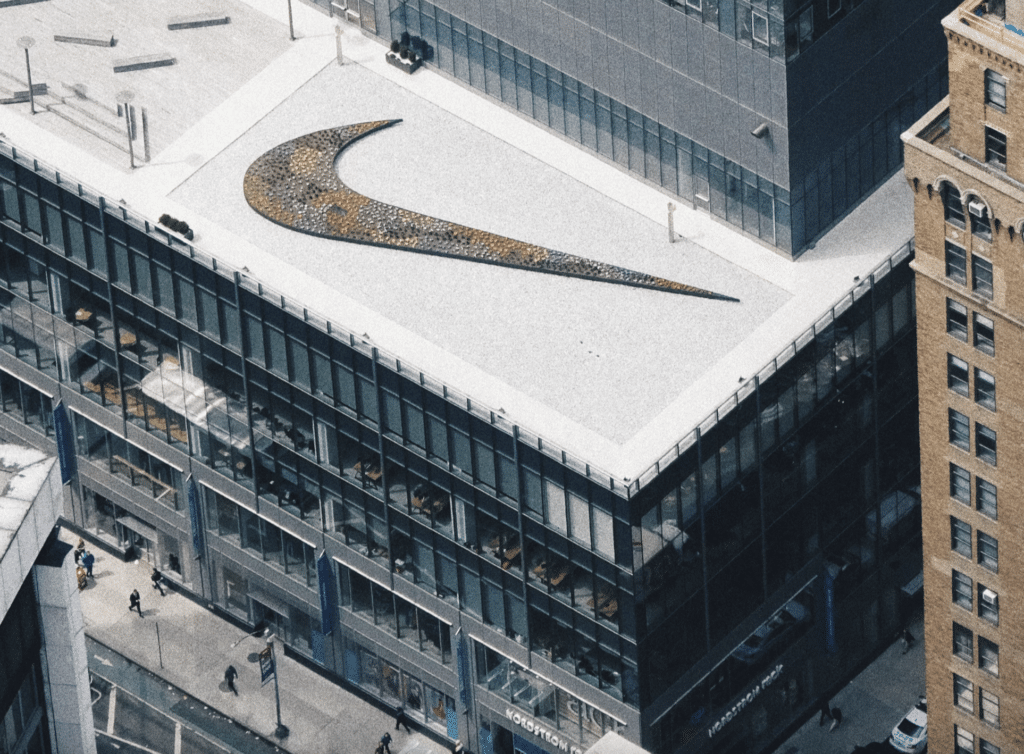KKR Acquisition Holdings I Corp raised $1.2 billion in an upsized initial public offering (“IPO”) on March 17. Trading on the New York Stock Exchange via ticker KAHC, the newly-public Special Purpose Acquisition Company (“SPAC”) was founded by private equity firm KKR & Co. and Lululemon Athletica Chairman and former Gap Inc. CEO Glenn Murphy, which stated in the February 4 S-1 that they filed with the U.S. Securities and Exchange Commission (“SEC”) that “while [KAHC] may pursue an acquisition opportunity in any business industry or sector,” it “intend[s] to capitalize on [its] ability to identify, acquire and manage a business in the consumer or retail industries.”
Not long thereafter, former Gap executive former CEO Art Peck of Gap Inc. revealed that he is similarly looking to SPACs, filing paperwork on Monday to raise $200 million for Good Commerce Acquisition Corp., “a SPAC that aims to focus on apparel and other brands ‘with relevance and business models for tomorrow,'” according to Seeking Alpha. In its recent SEC filing, Good Commerce – which will trade on Nasdaq – stated that its “objective is to create a next-generation consumer holding company by combining exceptional brands and leadership teams in the apparel and accessories, outdoor, health and wellness, home and other consumer-related industries,”
The new blank check firms “join the long list of companies riding the SPAC frenzy,” Business Insider reported last week, noting that SPACs – i.e., shell companies seeking to merge with private companies with the intention of taking them public – have boomed over the last year,” with a total of 248 SPACs raising $83.3 billion in 2020. In the first three months of 2021, alone, “246 SPACs [have] raised $76.7 billion, comprising 75 percent of IPOs.”
Not limited to the domestic market, the SPAC craze is expanding to Europe, where LVMH Moët Hennessy Louis Vuitton chairman Bernard Arnault revealed that he is partnering with former UniCredit CEO Jean Pierre Mustie and French firm Tikehau Capital to launch a SPAC venture in order to merge with European financial companies. At the same time, Francois Pinault, the French billionaire who founded rival French conglomerate Kering, invested in former Credit Suisse boss – and Kering board member – Tidjane Thiam’s financial services businesses-focused SPAC earlier this month.
Given the marked rise in popularity of SPACs, which are not actually novel and in fact, date back to the 1990s, it “seems almost inevitable that a substantial amount of litigation regarding companies taken public via de-SPACing transactions will follow the current volume of SPAC IPOs,” according to Michael Watson, senior legal counsel at litigation funding firm Deminor. “Given the volume of SPAC IPOs, even if securities litigation [waged against] companies that become public via a de-SPAC transaction” – i.e., the merger between a public-traded SPAC and its privately-held acquisition target – “is only consistent with litigation of IPOs generally, that will translate to [a fair share of] investor lawsuits.”
As we previously noted, while SPACs serve as an alternative to a traditional IPO for the target companies, they, nonetheless, bring with them many of the same risks that plague newly public companies. Among them are potential challenges that result from the “failure to act in the best interests of shareholders due to conflicts of interest between directors and officers of the target company, and PIPE financers or the SPAC’s sponsor and/or to disclose ‘material information.’”
Not merely a potential threat, SPAC-centric litigation is already coming into fruition by way of what Paul Weiss attorneys characterize as “a substantial number of lawsuits” that have been filed by SPAC shareholders, who are “contesting the terms of – or disclosures surrounding – de-SPAC merger transactions.” These suits commonly include allegations that a SPAC made “misleading disclosures in proxy statements soliciting shareholder approval of de-SPAC merger transactions” and/or that SPAC sponsors, directors or others “misrepresented material facts” – in a post de-SPAC transaction scenario – “about the target company or breached their fiduciary duties in a way that caused the value of the post-merger company to decline.”
Paul Weiss asserts that over past six months, plaintiff shareholders have filed lawsuits following de-SPAC transactions, alleging that SPACs and their managers have misrepresented things, such as “the stability of the target company’s customer base (by failing to disclose that the target’s biggest client was on the verge of leaving and developing a competing product), the growth possibilities of the target company (by failing to disclose that the target relied heavily on a single referrer of clients, which was on the verge of bankruptcy), and the target company’s compliance efforts (by failing to disclose a fleet of luxury cars used by target executives and a series of related-party transactions involving family members of the target executives).” Beyond that, at least one lawsuit has come about in light of a SPAC’s failure to “adequately describe the de-SPAC target search process by failing to disclose the extent of negotiations with 13 potential targets in similar industries.”
With the foregoing in mind, and in light of various SPAC-specific risks and/or potential conflicts, “Adherence to a thorough and well-documented transaction process is critical for SPAC business combinations, perhaps even more so than in the traditional M&A context,” according to Goodwin partners Caroline Bullerjahn and Morgan Mordecai.
In order to mitigate prospective legal issues in connection with a SPAC’s IPO and/or a subsequent de-SPAC transaction, Bullerjahn and Mordecai encourage SPAC boards to engage in “thorough and well-documented due diligence efforts, such that, if necessary, they can be accurately reflected in disclosures in connection with the de-SPAC transaction,” and “establish appropriate guidelines regarding communications between members of SPAC management and the target company related to employment with the target without board authorization to avoid any perceived conflicts relating to such discussions.” They also suggest that a SPAC’s board and the target company “also work together to ensure that disclosures related to the business combination are materially complete and accurate to reduce the risk of protracted and expensive litigation.”
Beyond that, it is essential that SPAC directors stay up to date when it comes to the evolving guidelines being issued by the SEC. For instance, Paul Weiss asserts that the SEC’s Division of Corporate Finance issued guidance “regarding 14 SPAC IPO disclosure considerations” – focusing on “disclosures regarding the economic interests of SPAC sponsors, directors and officers, and ways in which their interests may differ from other shareholders.”
Similarly, in addition to its guidance on SPAC IPOs, the Division of Corporate Finance also issued guidance on “nine separate disclosure considerations for de-SPAC transactions, including disclosures regarding how SPAC management evaluated the target company and other potential targets, the material factors considered in approving the transaction, conflicts of interest and the terms of any additional financing necessary to complete the de-SPAC transaction.” And “more guidance is likely forthcoming, including on projections specifically, [which] should be reviewed closely.”
The firm notes that “given the intense public attention on SPACs, it is no surprise that plaintiffs’ law firms have been scouring the more than 400 SPACs launched in the last year for litigation opportunities.” Despite such mounting litigation, “SPAC sponsors, directors and officers can mitigate exposure at each stage of the SPAC lifecycle, through considered disclosures, effective and well-documented diligence and other risk-reducing strategies,” including some of the points addressed above.











